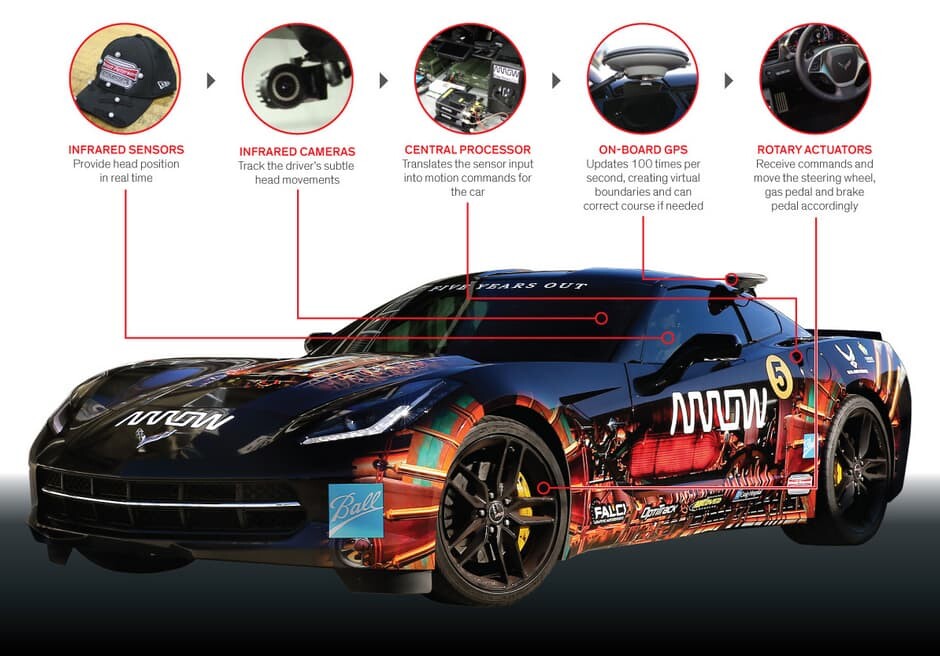For people like Sam Schmidt, autonomous driving technology isn't a luxury - it's a necessity. Schmidt lost movement in his arms and legs after a motorsports accident in 2000, so the only way he can drive is using Arrow's open-source semi-autonomous car.
Having first demonstrated the technology at Indianapolis in 2014, Schmidt has returned with a modified version of Arrow's Chevrolet Corvette Z06 and clocked 152 mph (245 km/h) on the famous oval. That's 45 mph (72 km/h) more than his previous record, and fast enough to make most people with full use of their limbs feel a bit nervous.
Compared to its first iteration, the car Schmidt drove at 152 mph has been subject to a number of improvements. Although it still uses an infrared camera to monitor the driver's head movements, the latest Arrow Corvette works in tandem with a new headset to more accurately translate head movement into control inputs.
There's also more information available about what's going on in the car, including live streaming, driver biometrics and environmental conditions, so Schmidt and his co-driver can be more closely monitored from pit lane.

Schmidt tilts his head from side-to-side to turn, while acceleration and braking are controlled by a mouthpiece connected to a pressure sensor. The car responds directly to the mouthpiece through a rotary actuator, which depresses the accelerator pedal depending on how hard the driver blows into the mouthpiece, or activates the brakes if he "sips" on it.
If the car gets too close to the track edge, a GPS system will warn the driver before gently guiding itself away from the danger, and there's a co-driver with conventional controls in the passenger seat just in case something goes wrong with the semi-autonomous system.
"It was a thrill to be back in control and hitting racing speeds on the Indianapolis Motor Speedway again," said Schmidt. "The SAM project is a great example of what's possible when the right people come together to innovate and push boundaries."
The technology behind Arrow's SAM is impressive, but there's a bigger social force driving its development. All the software and tech behind Arrow's Corvette is available to developers and engineers, in an attempt to give greater independence to people with a disability.
Source: Arrow, via Business Wire.






